F. Weber Co.
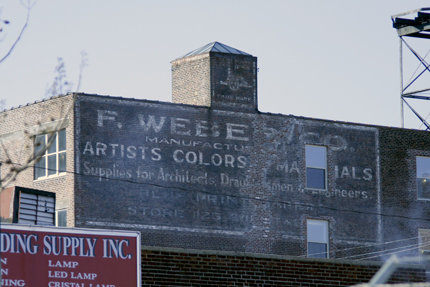
“F. Weber Co.
Manufacturers of
Artists Colors (&) Materials
Supplies for Architects, Dra(ughts)men & Engineers.
Blueprint Papers
Store 1125 Ch(est)nut”
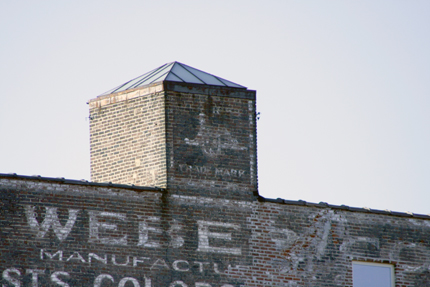
Symbol at top appears to be the winged lion logo with the words “TRADE MARK” below, as seen here in this 1927 advertisement.
This building is listed as the Main Office and Factory in advertisements (Arts & Decoration, Volume 14, Nov 1920) and as a research lab with Weber as technical director and 2 chemists on staff (Industrial Research Laboratories of the United States, 1946).
Established in 1853 in Philadelphia, Pennsylvania, the Martin/F. Weber Co. is the oldest and one of the largest manufacturers of art materials in the United States. The company manufactured artists supplies, including painting and drawing supplies, mathematical instruments, materials for gilders, sign and coach-painters, china decorators, engineers, lithographers, etchers and engravers, as well as materials for pyrography or wood burning, and wax and paper flowers.
Originating in 1853 as Scholz & Company, a sales agency, the company evolved through a series of growth partnerships to become F. Weber and Company in 1887, under the leadership of its owner, Frederick Weber. Throughout the late 19th century, F. Weber and Company offered a wide range of imported and manufactured products. A significant number of patents for innovative art products were awarded to the company.
The disruption of commerce during World War I caused American artists to seek more American-made art materials thereby creating a need and an opportunity for F. Weber to expand its manufacturing capabilities. By the early 1920’s, in addition to its manufacturing and distribution facilities located here, F. Weber and Company also had three retail stores; in Philadelphia, Baltimore and St. Louis.
One of their most notable products is Original Permalba White, first formulated in 1921. Fred Weber was the first to develop a nontoxic, opaque, white oil paint with smooth working qualities to replace the toxic, lead-based whites that artists had used for hundreds of years. In the 1930’s Mr. Weber introduced new pigments to the industry with excellent lightfastness and reduced toxicity to the artist and synthetic varnishes to replace the less stable natural materials used in the past.
Still in business, located in Northeast Philadelphia. This building has been converted into loft apartments.
1220 Buttonwood Street [map]


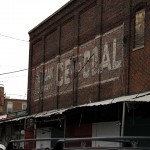
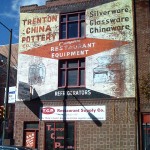
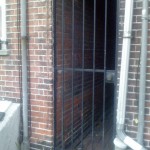

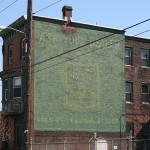
Leave a Reply